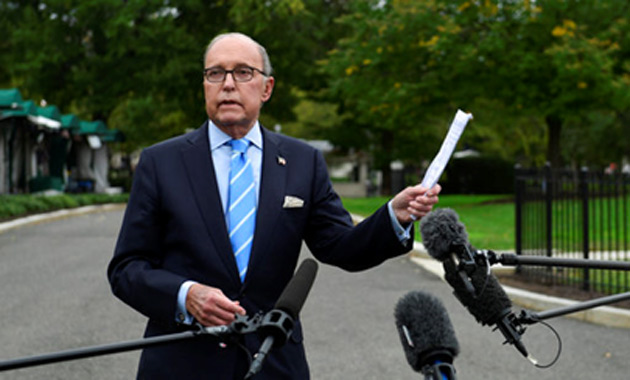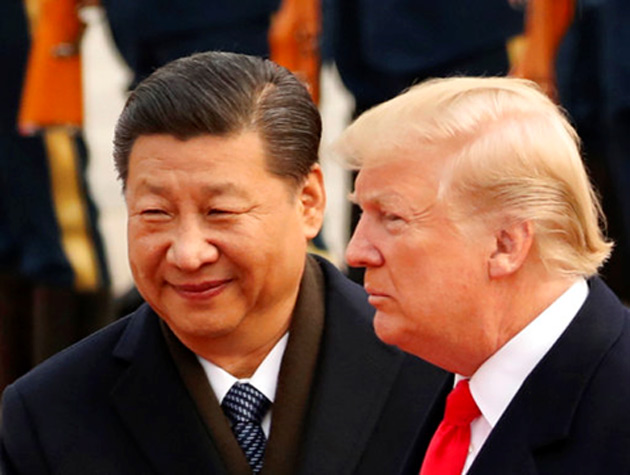
Economic Sugar High Will End with a Crash
-
 Patrick Watson
Patrick Watson
- |
- November 27, 2018
- |
- Comments
By most measures, the US economy is performing okay. New data tomorrow will likely show real GDP growth still near 3.5%. Unemployment is below 4%. Inflation is up a bit but still historically low.
Yes, the data has flaws. There’s plenty of regional variation. Your mileage may vary. But generally speaking, conditions could be a lot worse.
The problem: sometimes the economy weakens beneath the surface. This fools even experts like Larry Kudlow, one of President Trump’s top economic advisors. In December 2007, he wrote,
Economic growth may indeed pause to roughly 2 percent in the next couple of quarters, the result of two years of overly tight money from the Federal Reserve and the ensuing upturn in sub-prime defaults and foreclosures. You can call it Goldilocks 2.0. But you can’t call it a recession.
We now know the economy was already in recession when Kudlow said this. Breakdowns aren’t always obvious in real time.
Hence, the current not-so-bad numbers don’t guarantee smooth sailing. Rough seas could still lie ahead… and I think they do.

Photo: AP
Fun Times
Mistakes like Kudlow’s are an occupational hazard for writers. Reviewing my own archives can be pretty humbling too.
However, I just re-read a story I wrote a year ago, and I think it’s held up pretty well: How Tax Cuts Will Trigger Recession.
Like what you're reading?
Get this free newsletter in your inbox regularly on Tuesdays! Read our privacy policy here.
I didn’t predict immediate recession. I showed how the economy was growing above capacity, how the corporate tax cuts (which had not yet passed) would increase the deficit and raise interest rates, and how growth would eventually slow. Meanwhile, I wrote:
If this tax bill passes in its current form, the recession may happen sooner and go deeper. The combined fiscal and monetary tightening could be the triggers.
However, first we might get a sugar-high inflationary rally, which could last a while. GDP ran above potential for four years in the late 1990s, and for over a year in the housing craze.
Those were fun times while they lasted. Then the fun stopped.
As it’s turned out, “sugar-high inflationary rally” is a pretty good description for 2018. Two particularly sweet events made it a good year.
- Business tax cuts enabled trillions in stock buybacks, which increased earnings growth and drove share prices higher. The resulting “wealth effect” enhanced consumer confidence—at least for those who own stocks—and made them spend more freely.
- President Trump’s tariffs, both threatened and actual, made importers accelerate purchases and build inventory to get ahead of new taxes. We already had Overheated Highways before his trade rhetoric ramped up, and it intensified further.
These events created jobs, made employers raise wages for high-demand occupations, and stimulated spending on warehouses, trucks, and other logistical infrastructure.
Then what’s the problem?
As the old proverb says, all good things must come to an end.

Photo: Wikimedia Commons
Weird Events
Every parent knows sugar-stimulated kids do crazy things. So does a sugar-stimulated economy.
A November 15 Wall Street Journal story reports that desperate employers, unable to fill openings in this tight job market, are hiring workers sight unseen. Apply online, quick phone interview, you’re hired.
These aren’t small companies either. The story mentions Macy’s, L Brands, Boeing, and CVS Health. A Macy’s spokesperson said proudly, “We are providing candidates with a fast and easy hiring process.”
Get that? The employer feels it must provide applicants with a fast and easy process. This is not normal. It’s the kind of thing we see just before trends change.
Here’s another one. US soybean farmers are storing tons of soybeans in every nook and cranny they can find, and in some cases plowing down perfectly good crops, because China has stopped buying them.
Like what you're reading?
Get this free newsletter in your inbox regularly on Tuesdays! Read our privacy policy here.
This is Beijing’s retaliation for US tariffs. Some economists said other buyers would replace China. To some extent they have, but not nearly enough. And since you can’t store soybeans indefinitely (they spoil if not kept dry), the unsold crop is rotting away.

Photo: Flickr
But fear not, farmers: the USDA has bailout funds available, since China is (for now) still buying our Treasury bonds.
That’s right. We are borrowing money from China to rescue our farmers from the harm inflicted on them by our quest to punish China.
Harmful Threats
The bean-laden farmers are hoping for a trade breakthrough, and it could happen. President Trump and Chinese President Xi Jinping will meet this weekend at the G-20 Summit in Buenos Aires.
Right now, the US has 10% tariffs on most Chinese goods, which will rise to 25% on January 1. Getting ahead of that increase is driving much of the inventory-building I mentioned. Trump and Xi might agree to delay or even cancel the higher rates.

Photo: AP
Here’s the problem, though: A huge amount of inventory is already on the shelves or on the way. Even if the tariff threat disappears, that inventory won’t.
What will disappear are the newly created jobs. Once the warehouses are full, companies won’t need as many trucks, drivers, and other logistics workers. They will need customers to buy the stuff… which will take time.
So, contrary to the idea that tariff threats are useful negotiating tools, the threats themselves are harmful. They change business decisions and kill jobs, even if never implemented.
Other things could compensate, of course. Maybe the Fed will reconsider its tightening policy. Maybe Xi will surrender to Trump’s demands. Maybe soybean-hungry aliens will land in Iowa and buy all the excess supply. Anything is possible.
But I wouldn’t bet on it.
Like what you're reading?
Get this free newsletter in your inbox regularly on Tuesdays! Read our privacy policy here.
See you at the top,

Patrick Watson
@PatrickW
P.S. If you like my letters, you’ll love reading Over My Shoulder with serious economic analysis from my global network, at a surprisingly affordable price. Click here to learn more.

 Patrick Watson
Patrick Watson
